|
It has been a little while since my last update, but I can assure you that I am alive and well! I had a busy winter of travel interspersed with some quality time back home in Hamilton, Ontario. For the month of February, my wife Laura and I ventured to northern Peru. We rented a vehicle for the first 17 days and completed a big loop in the northwest, followed by a flight to Iquitos where we spent around 10 days in the Amazon at three separate lodges. The trip was amazing with innumerable highlights, and I have been posting daily blog posts on my travel blog. In March I was off on my next trip, this time to Jamaica to lead a tour for Quest Nature Tours. Jamaica is a wonderful country with friendly people, amazing food, beautiful scenery and quite a lot of biodiversity for its small size. My group had an amazing trip, highlighted by finding all 29 endemic bird species found on the island. I returned from Jamaica around two weeks ago, and in the time since I have been busy editing photos, wrapping up everything from the Jamaica tour, prepping for spring fieldwork, and generally just gearing up for the next few months which are always the busiest months of the year for me. Cold and rainy weather meant that I didn't venture outside to look for birds very much. That changed this past week. We experienced a glorious weekend with warm sunshine and a cool breeze, and a good friend of ours visited us from Barrie for a few days. We even made it out to a golf course for the first round of the season! A hike at my "local patch" produced a few First Of Season birds including several Tree Swallows, as well as two species of snakes. Ah, sunny days of April. A few days ago, I had a private birding tour booked in the Point Pelee area, the day after a total solar eclipse was scheduled. I made plans to drive down to southwestern Ontario to experience my first total solar eclipse, lead the tour, and catch up on some early spring birds. The weather forecast was looking good with far-reaching south winds and warm conditions; surely there would be a lot of birds around! On the morning of the eclipse we received some clarity on where the viewing conditions would be best. The Hamilton and Niagara areas were likely to see cloud cover, while conditions were looking much better towards Lake Erie. This worked out perfectly with my plan for the day: I would bird westward along the Lake Erie shoreline while keeping an eye on the cloud forecast, and find a clear spot with no people by 3 PM for the eclipse. In the end my plan was very successful. My first stop was the Calton Swamp in Elgin County since there had been some Red Crossbills reported there in previous weeks. This is a rare and irruptive nesting species in southwestern Ontario but there are a few spots where the species can be found at the moment. I had never seen a Red Crossbill in Elgin County, and so I made a brief but successful stop. No photos, unfortunately. I continued on to Port Stanley. The eclipse watchers were already starting to gather at the harbour even though we were still over four hours away from totality, but luckily I was able to grab a parking spot to bird the harbour before the crowds really filled in. On my first scan of the breakwall, I was surprised to see two female Harlequin Ducks! This is a rare species on Lake Erie and there aren't many records for Elgin County. I later learned that these Harlequins had been present since February, though they hadn't been seen in recent weeks. A little far for photos so I settled for some poor digiscoped shots. The sun came out at this time, much to the delight of the eclipse watchers. I left the harbour (and all the people) behind, and drove up to the Port Stanley lagoons/wetlands. These are some of my favourite lagoons in southwestern Ontario and I have found a few good birds here over the years including Western Sandpiper and Eared Grebe. There are always large numbers of ducks there early in the season. I wasn't able to procure any rarities this time around, though it was nice to see a few year birds including Blue-winged Teal and Wood Duck. Just as I was about to leave, a car-full of familiar faces pulled up. It was Rob Dobos, Cheryl Edgecombe and Dave Don from Hamilton, and they had traded the cloudy skies of Hamilton for the clear viewing conditions of Port Stanley. After chatting with them for a bit, I wished them well and continued to the southwest. I was hoping to be in the Rondeau area for the eclipse. I checked out a few spots including Keith McLean Conservation Area and the town of Shrewsbury, and then drove a little further to a farmhouse where a pair of Black-billed Magpies were setting up shop. This is a very rare bird in southwestern Ontario, but there has been a rash of records in the last year or so. It's difficult to know the origin of these birds, especially when magpies aren't really supposed to migrate. Sometimes, the Ontario Bird Records Committee has accepted records of Black-billed Magpies in southern Ontario, while some of the other records have been turfed. Ultimately, none of us really know where these magpies came from; it is just a guessing game. These Shrewsbury magpies were quite accommodating, hanging out at the roadside upon my arrival. The lighting was very harsh with heat haze coming off the road, making photography difficult. A neat bird to see in southwestern Ontario! I continued on to the village of Erieau where the eclipse watchers were out in full force. There was a kind of nervous energy in the air, as people gathered along the roadside and waited. The partial eclipse had begun as I walked along the Erieau Rail Trail, though you wouldn't know it unless you looked up at the sun with solar glasses. The walk at Erieau produced a few birds including a flock of Lapland Longspurs that settled in a nearby field. This species is not frequently detected in the spring, probably because they prefer to hang out in open fields far away from the roads (and the birders). I ventured over to the Blenheim lagoons as the minutes ticked down to totality. My goal was to be in an open area with a good view of the sky and with a lack of people. Several others had set up on the main berm with telescopes, so I slunk away to the north end of the lagoons where there were no others. As the minutes ticked down to totality, the landscape appeared to dim. It was a different kind of lighting than what you see at sunset; it was more like the overall brightness settings were just turned down. Shadows were still fully crisp; It was a really weird sensation! And then totality hit. A wave of darkness appeared on the horizon and almost instantly, we were overtaken by it. Just like that, it looked like late evening, with a "sunset" on the distant horizon in all directions. The air cooled by a couple of degrees. A lot of the birds quieted, other than the robins which began singing their dusk song. The minutes of totality where incredible and I scrambled to ready my camera for a few photos. I also made sure to observe it through my spotting scope. The solar prominences were easy to see and it was just an awesome experience. And then, about two minutes after totality started, the sun peeked out from the other side of the moon. The landscape quickly brightened, the birds began singing again, and quite a few ducks took off from the lagoons. A few minutes later and everything appeared to be back to normal. I scoped the duck flock and many of them were glancing nervously up towards the sun, as if they couldn't trust it. I continued on with my day, knowing that nothing else would top the strange sensation of witnessing the solar eclipse and the few minutes of totality. I drove to Wheatley harbour and then Hillman Marsh, finding a few new year birds including Marsh Wren and American Wigeon, plus a Fox Sparrow and some American Tree Sparrows. I then bumped into Steve Pike and we drove over to the Mersea Road 1 fields which have some standing water and which often attract ducks and shorebirds. We found a flock of Dunlins and some Greater Yellowlegs before calling it a day. That evening, I met up with a good friend of mine in Kingsville for dinner, a great way to end the day. I had a tour organized with a couple visiting Canada from the U.K. on Tuesday. Before meeting with them, I scouted out the shorebird cell at Hillman Marsh and found a Common Gallinule. This is a surprisingly scarce species in the Pelee area and this was the first sighting of the year. The tour itself was perfect. I had a lot of fun birding with Rosemary and Tony, and fortunately for us, the birds even cooperated! Quite a large number of early April migrants were in, including swarms of Dark-eyed Juncos and Northern Flickers. Many other sparrows were mixed in including Field, Chipping, American Tree, Swamp and Eastern Towhee. I was happy to find my first Ruby-crowned Kinglets, Hermit Thrush and Black Scoter for the year, as well. The rarest find was surely the bright male Nashville Warbler that was popping around at the south end of the Redbud Footpath. I am quite sure it is a new spring arrival given its appearance and its frantic foraging for insects on the ground. I am not sure what the record early date is for Point Pelee or the province, but this is surely up there with the earliest. I normally see my first Nashville Warbler of the year in the last week of April. We concluded at Hillman Marsh where we found quite a few new species, including Trumpeter Swan, Osprey, Pied-billed Grebe and Forster's Tern. A beautiful day with good company; can't ask for much more! I drove back to Hamilton, content with how the past few days had gone. The eclipse experience was perfect and something I will hopefully remember for many years to come. But the birding had also been a blast, and the tour had gone off without any issues and with a ton of great sightings.
Every day brings new sightings as we move along in mid-April. Before long the "most wonderful time of the year" will be here - May in southern Ontario. I'm looking forward to it!
0 Comments
Leave a Reply. |

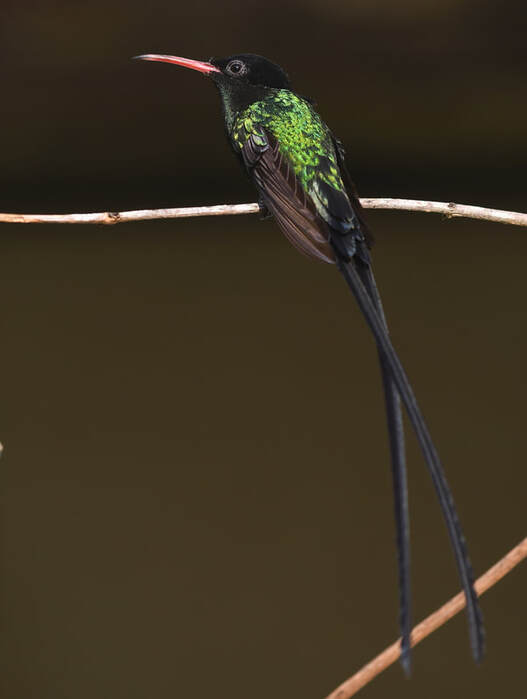


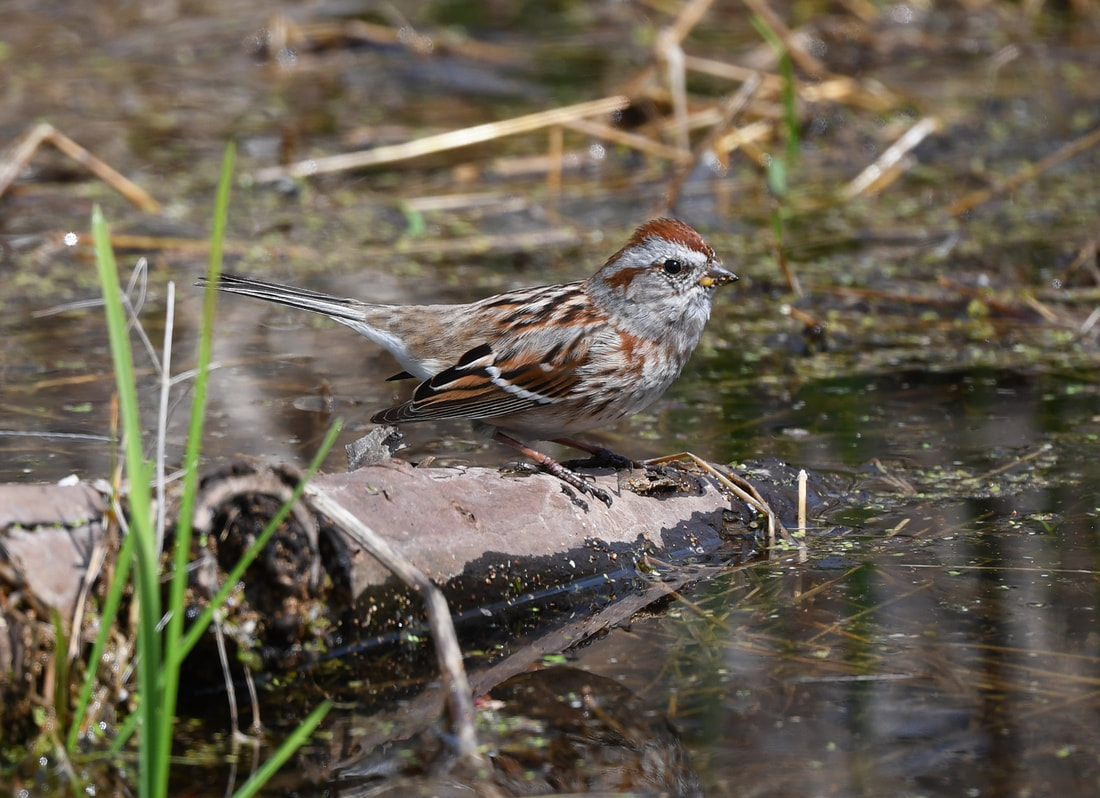


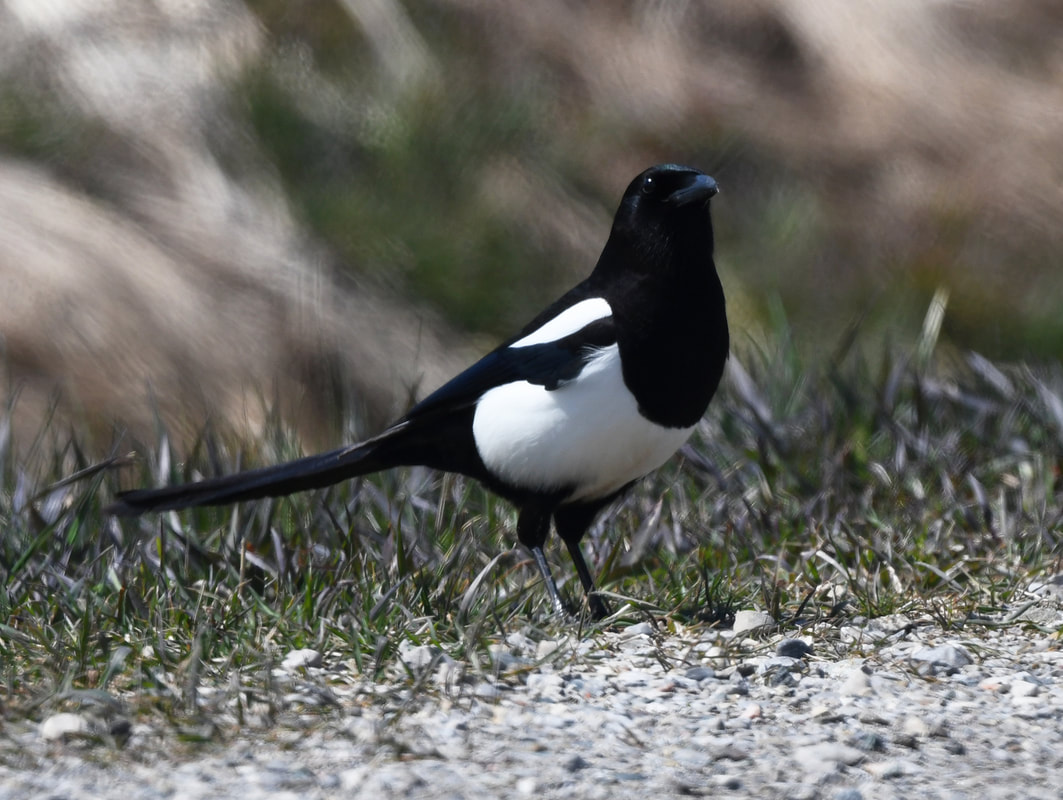


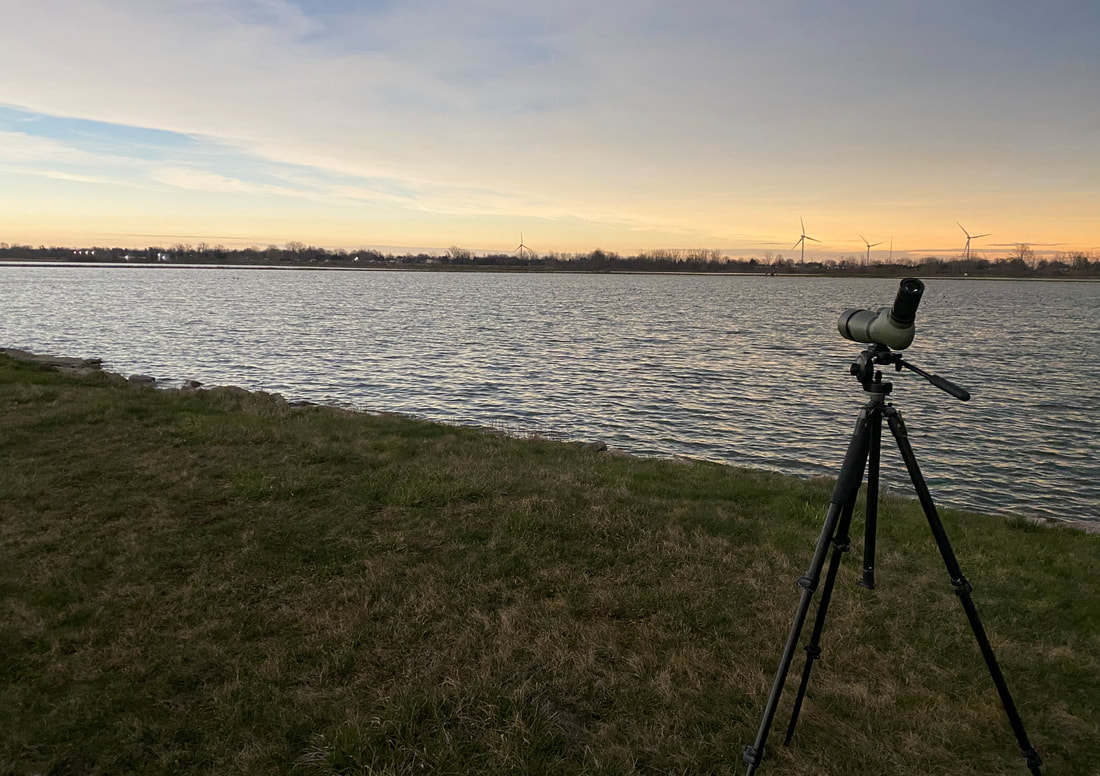
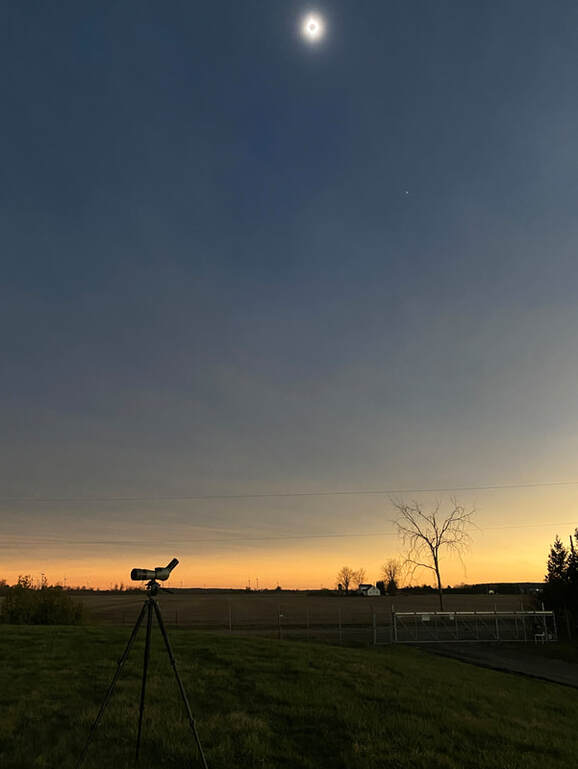




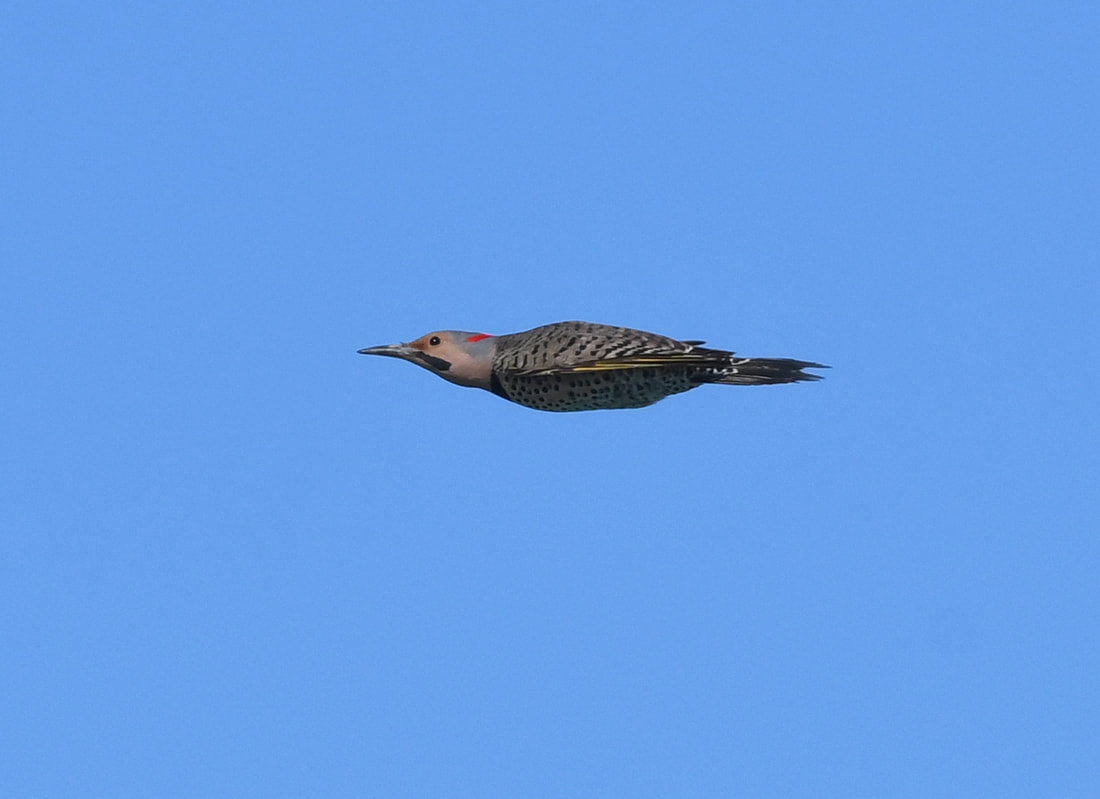



 RSS Feed
RSS Feed